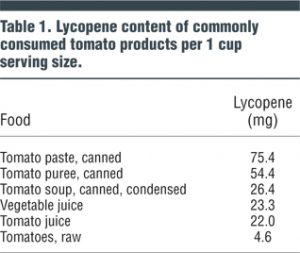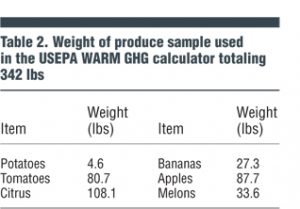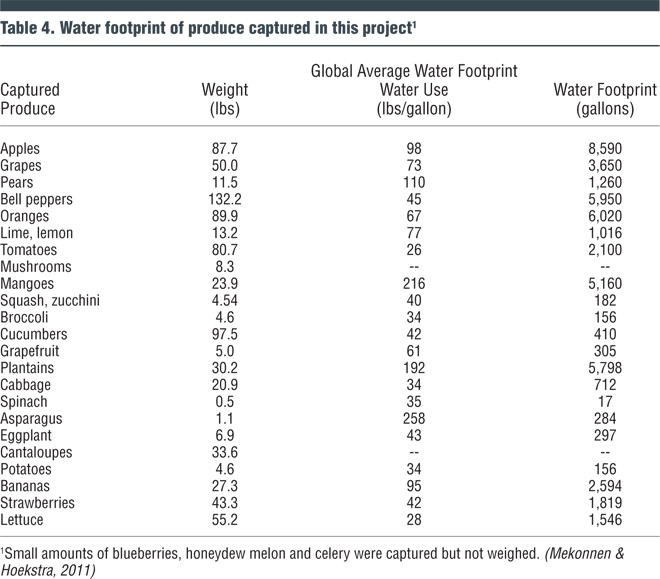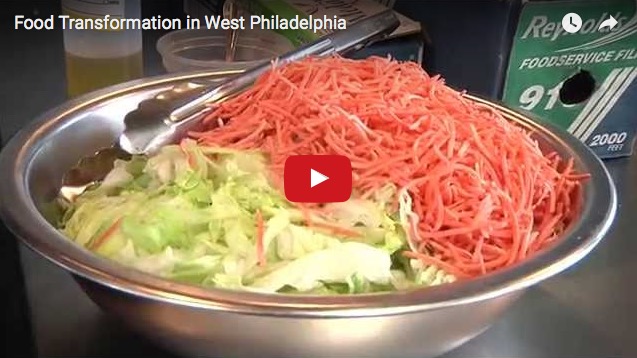Food repurposing or conversion reduces the burden that our food system places upon GHG production and other environmental effects, while helping to improve the diets and economic potential of those in greatest need. Part II
T. O’Donnell, J. Deutsch, R. Pepino, B.J. Millron, C. Yungmann and S.H. Katz
BioCycle December 2015
The Food System-Sensitive Methodology (FSSM) was introduced in 2015 as a systematic management paradigm for creating new solutions for food loss and waste prevention (for further details see O’Donnell et al., 2015). The FSSM methodology provides a way to understand and manage food systems that embrace economic, social, environment, natural resource use, biodiversity, health, and nutrition factors.
Part I of this article (“Food Was Never Meant To Be Wasted,” October 2015) discussed the economic benefits realized by creating new products from food that could otherwise be lost. It described a social enterprise scenario utilizing repurposed tomatoes. Part II of this article will cover: Social and health benefits; Environmental benefits; and Education and outreach.
Social And Health Benefits
Fruits and vegetables are important components of a healthy diet (USDA, n.d.) and evidence continues to develop indicating that ripe produce is the most nutritious. Nutrition then becomes another key incentive for finding new ways to prepare surplus produce for consumption instead of other options, as anything besides human consumption misappropriates its greatest value.
As an example, the tomato fruit is one of the most popular and versatile commodities in the world. Tomatoes are consumed fresh, and processed into a wide range of manufactured products, making them one of the primary components of many diets. Tomato consumption has been associated with enhanced immune system function, and a reduction in the risk of cardiovascular diseases, cataract and macular degeneration, and certain cancers including prostate cancer (Tsitsimpikou et al., 2014).
Many of the health benefits of tomato consumption can be attributed to the presence of carotenoids, naturally occurring pigments that are the sources of the yellow, orange, and red colors of many plants (International Agency for Research on Cancer, 1998). Lycopene is the primary carotenoid in tomatoes, accounting for over 80 percent of the total tomato carotenoids in fully ripened fruit (Lenucci, et. al, 2006). Table 1 displays the lycopene content of commonly consumed tomato products. Many of these products are real examples of how surplus tomatoes can be converted into healthy food products, dramatically increasing the lycopene content per serving.
Environmental Benefits
Many positive environmental and health outcomes are driven by how farm products are raised and eaten and eventually disposed. How food production is managed has a direct impact on air emissions, water use and water pollution. This provides a new dimension to consider with food, or more specific to this report, produce production. Methods to begin understanding how different crops contribute to greenhouse gas emissions and water use efficiencies are now publically accessible.
Greenhouse Gas Emissions
The U.S. EPA offers an online greenhouse gas (GHG) calculator (WARM) to help people understand and compare GHG emissions according to the Food Recovery Hierarchy (WARM, n.d.). Table 2 is a partial list of one day’s produce captured from a supermarket in West Philadelphia in April 2015 just before it was sent off-site for reuse or disposal. (All of the produce was culled from the customer-facing displays by store personnel using their standard practices for removing food for sale.) These food types are the ones used in the current Version 13 of WARM. The weight of the subsample was entered into the program with all parameters set to default, including an assumption that landfill disposal is accompanied by methane recovery for energy generation. Three management scenarios were evaluated: landfill disposal, composting, and not raising food to be later wasted (waste prevention).
Table 3 shows the output from the WARM model. Disposing of 342 pounds of fruits and vegetables in a typical landfill emits methane, a GHG that is 25 times more potent than carbon dioxide over a 100-year period (USEPA, 2015a). An equivalent of about 70 percent of the input weight of the food reverts to about 240 pounds of carbon dioxide equivalent air emissions. A strikingly large amount of the now wasted food is converted to an air pollutant of considerable concern — and one that remains in the atmosphere for about a decade.
Alternatively, composting or deciding not to farm food that will ultimately be wasted (though it is challenging to predict) results in an overall reduction of the amount of emissions from landfilling. Composting not only reduces methane emissions but also results in carbon storage in the soils where the finished compost is used.
According to the WARM calculator, the benefits are so large that the 342 pounds of composted food reduces emissions by 280 pounds. Almost 82 percent of the food continues to produce long term environmental and soil benefits. If the wasted food were never grown, an ideal scenario for understanding impacts, 400 pounds of GHG emissions are avoided, more than the weight of the food itself. This happens because all of the emissions from growing the produce along its food supply chain are eliminated. Currently, putting food in landfills or not growing the food in the first place are the boundary conditions for the GHG impacts of fruits and vegetables: Maximum GHG benefits by optimal food management and maximum negative external impacts by sending food that is no longer needed to a landfill.
Water Footprint
The water footprint of fruits and vegetables is a measure of the total volume of water that is used on average to grow the produce (Mekonnen and Hoekstra, 2011). It represents total groundwater and surface water irrigation and rainwater used and the amount of water needed to dilute nitrogen pollution from crop production to local water quality standards. The water footprint provides a tool to assess how much water is used on average to grow crops and how water use compares between crops. Calculating the amount of water needed to dilute nitrogen levels in farm crops is one way to help understand the importance of maintaining water quality so it can be reused sustainably while also emphasizing the negative externalities of using too much nitrogen fertilizer.
Table 4 lists the water footprint for most of the produce evaluated in this study. Even in this small data set, it is clear how much water becomes redundant when the food is thrown away. All of the energy and effort to deliver 10,500 gallons of crop water would be wasted if just 168 pounds of apples and tomatoes in our sample were sent to a trash compactor. The quantities become enormous when scaled to national levels. Perhaps loss of this “virtual water” is more important with reference to the long-term drought in California and elsewhere that ongoing climate change is exacerbating. In times of strict agriculture water use allocations, lost water means more lost revenue and environmental impairment.
Education And Outreach
Once the decision has been made to implement innovative programs, the next step is to design promotional and training material for constituent groups. Whereas a decade ago the messages were distributed via major media outlets, current channels of communication to raise public awareness and prompt behavior change are both open and very segmented. Consequently, messages must be crafted for many media and targeted at specific audiences.
With the goal of diverting good food from the waste stream to feed food-insecure people, audiences for the message include:
• Restaurants and food markets where usable food is sent to landfills, but could be collected for use.
• Soup kitchens, shelters and food pantries where volunteers need simple recipes for preparing surplus food.
• Cooks and culinary students who could develop recipes using surplus food.
• Entrepreneurs who want to create products using surplus food.
• Ordinary citizens who throw away usable food because they don’t understand how to use it safely.
• Organics recyclers looking for new ways to improve their craft.
Effective ways to target audiences quickly and frequently include posting on websites, offering short, focused online courses, and using social media to reach specific constituencies. For instance, using Instagram is good way to reach young adults while creating a Facebook page would attract more post-college viewers. Uploading and linking videos about surplus food processes with related text documentation provides a powerful way to communicate to all audiences.
Video is a particularly effective medium to demonstrate processes such as food waste conversion, especially since dealing with food is very visual. Video also ensures a uniform experience for informing consumers and use of videos for instruction is now commonplace. To interest more restaurants and food markets to donate surplus food, the authors created a series of Targeted Open-Online Course (TOOC) modules, and free videos embedded in websites and communicated via social media. A 12-minute video summarizing part of the food conversion project in West Philadelphia can be viewed here:
Opportunities And Next Steps
This two-part article series has presented certain elements of the FSSM method to show how converting wholesome produce from supermarkets into new products before it is misdirected into the waste stream opens the door to several new social enterprise and community opportunities. Each provides people with new ways to create food products and jobs while opening new vistas for professionals to enrich management and practical methods of sustainable food management. This entire concept and practice area emerged from the increasing momentum and paramount need in America to stop wasting food.
With further development, FSSM may be a significant contributor to the new goal set by the U.S. Environmental Protection Agency and U.S. Department of Agriculture to reduce food waste in America by 50 percent by 2030 (USDA, 2015a).
Some food waste is inevitable. However, the produce captured and evaluated as part of this research was never meant to be wasted. All of it had passed strict safety and quality criteria and survived the trip from a farm to the supermarket shelf where it was displayed for purchase. It was intended to be eaten. Upstream, waste from farms and wholesalers represent an even larger quantity of surplus food but are outside the scope of this paper.
Repurposing food resources that are already produced and adding them back into the food system reduces environmental and climate changing burdens — and less new land will need to be farmed for increased food production. It also makes better and more productive use of the food already in the system while helping to improve the diets and economic potential of those in greatest need. These new ways of thinking and acting should benefit food recyclers by putting their skills to use in new ways to capture foods now in the supermarket business cycle for a longer period of time instead of being cast into the waste cycle prematurely.
Learning to develop new economic, social and environmental methods to convert foods into new products and new pathways is a team effort. As an example, the work leading up to this two-part article tapped into the expertise of specialists in the areas of culinary arts; food science and nutrition; food waste management and composting; hunger relief; food safety; supermarket and food retail; videographers, editors, graphic designers, website and social media developers; and marketing, public relations and publishing. By moving outward to find new ways to convert food and reduce waste in the manufacturing and agriculture sectors, even more experts are needed to help the government, private sector, nonprofit, and educational sectors expand the broad team approach that embodies the FSSM model.
Author affiliations: Thomas H. O’Donnell, Land and Chemicals Division, U. S. Environmental Protection Agency, N.A.H.E., Region 3, Philadelphia, PA (odonnell.tom@epa.gov); Jonathan Deutsch, Department of Culinary Arts and Food Science, Center for Hospitality and Sports Management, Drexel University, Philadelphia, PA, (jdeutsch@drexel.edu); Richard Pepino, Drexel Food Lab, Center for Hospitality and Sports Management, Drexel University, Philadelphia, PA, (richard.vincent.pepino@drexel.edu); Brandy-Joe Milliron, Department of Nutrition Sciences, Drexel University, Philadelphia, PA (brandy-joe.milliron@drexel.edu); Cathy Yungmann, Department of Communication, Cabrini College, Radnor, PA, (cathy.yungmann@cabrini.edu); S.H. Katz, Krogman Center for Research in Child Growth and Development, University of Pennsylvania, CEO World Food Forum, Philadelphia, PA (skatz2001@aol.com).
Acknowledgements: The authors gratefully acknowledge the many individuals and organizations that supported and continue to support this research, especially the owners and staff of Brown’s Super Stores in Philadelphia, Jeff Brown, Tim Nolf, and David Deets, and others including: Cabrini College Communication Students Nick Cipollone, Amber Marshall, Lauren Hight, Greg Smith under the direction of Cathy Yungmann, and Drexel support from Alexandra Zietz and Daniel Yohe.
Disclaimer: Any views expressed in this report do not necessarily represent those of neither the United States government nor the Environmental Protection Agency. Mention of trade names or commercial products does not constitute endorsement or recommendation for use.

















